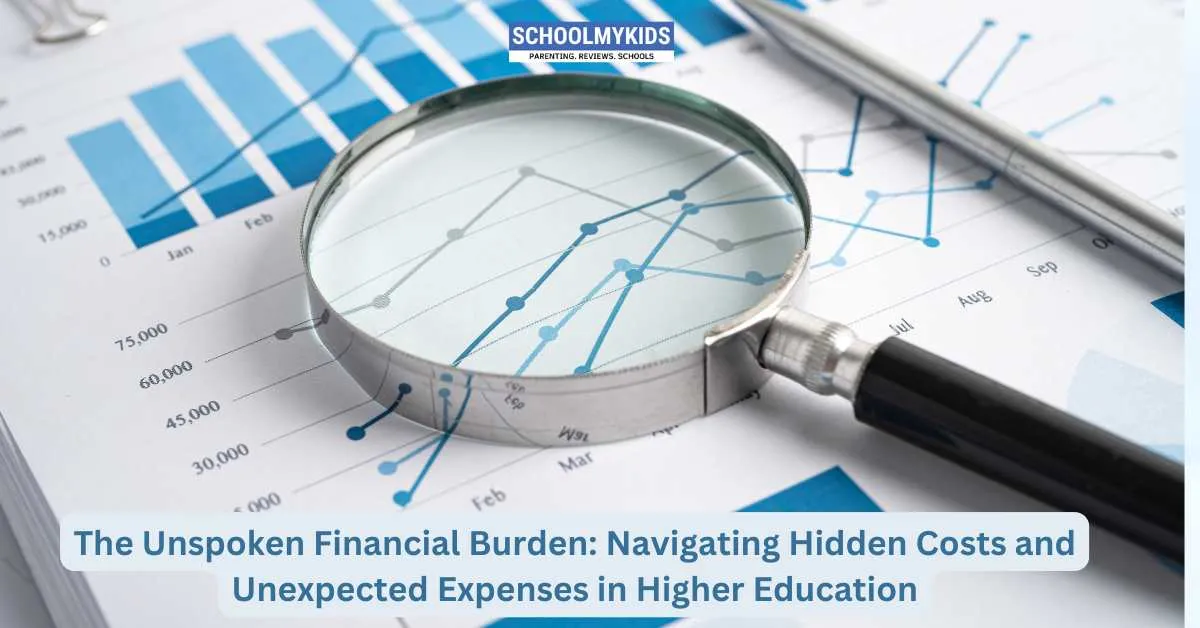Introduction
When students gear up for college, most conversations revolve around tuition fees. Brochures highlight academic programs, scholarships cover the headlines, and families calculate loan amounts or savings. But once students settle in, reality sets in: tuition is only the beginning. A surge of hidden expenses—textbooks, lab materials, tech repairs, printing costs, professional attire, travel for internships—starts piling up. These costs often aren’t mentioned upfront but can quietly shape a student’s experience in powerful and painful ways.
What Hidden Costs Really Look Like
Hidden costs in college aren’t about luxury—they’re about necessity. A ₹4,000 textbook required for a core class, a laptop repair during midterms, ₹1,500 for lab equipment, and ₹500 for printing assignments each month. Add to that the cost of clothes for placements, transportation to job fairs, or even paying for access to online software and academic databases. None of these show up in fee structures or orientation talks, but they’re real—and for many, relentless.
For students from financially secure backgrounds, these are inconveniences. But for first-generation students, or those from low-income families, they can be deal-breakers. Some students choose to skip buying books, share login credentials for required platforms, or avoid labs where they can’t afford the tools. Over time, these decisions don’t just affect performance—they chip away at self-worth.
The Emotional Impact of Financial Strain
Financial pressure doesn't stay in the bank—it seeps into a student’s mind. Constant stress about money leads to chronic anxiety and affects mental health. Students start avoiding social events, skipping group trips, or distancing themselves from peers because they simply can’t keep up. It’s not about disinterest—it’s about the silent shame of having to say, “I can’t afford it.”
This emotional toll is compounded by the pressure to "hustle." Many take part-time jobs to cover these hidden costs, often working late nights or weekends that interfere with studying or rest. Some even miss class to work extra shifts, stuck in a cycle where survival takes precedence over learning. These students aren't lazy or disorganized—they're stretched to the limit.
Why Institutions Must Respond
Higher education isn't just about academics—it’s about access, equity, and empowerment. Colleges and universities must acknowledge that financial strain is a barrier just as real as any academic prerequisite. Transparency about the true cost of attendance is the first step. Students deserve to know what expenses they might face beyond the classroom.
Beyond transparency, institutions can actively support their students. Textbook lending libraries, digital subscription bundles, laptop rentals, subsidized meal plans, and emergency micro-grants can ease pressure. Even something as small as free printing credits or reduced-cost transport passes can make a meaningful difference.
Financial literacy programs are another underused but vital resource. Teaching students how to budget, track spending, and plan for emergencies isn’t just about college survival—it’s about lifelong resilience.
Student Solutions That Work
Despite the challenges, students are resourceful. Many form book-sharing groups or swap used supplies through campus forums. Carpooling to placements, organizing communal grocery buys, or sharing dorm appliances are more than practical—they build community and reduce isolation.
Digital tools like budget tracking apps, student discount platforms, or browser extensions for price comparisons can help students make smarter choices. Reaching out for campus aid, applying for smaller grants, or even talking to professors about low-cost alternatives can be game-changing—but only if students feel safe and supported enough to ask.
The key message? Asking for help is not failure—it’s a step toward thriving. Colleges that normalize this conversation empower their students to succeed, not just academically but holistically.
Conclusion
The price tag on a degree goes far beyond tuition. For many students, it includes emotional strain, missed opportunities, and daily decisions between necessity and survival. But it doesn’t have to be this way.
When institutions look beyond enrollment stats and address the hidden costs of student life, they build something greater than academic excellence—they foster equity, dignity, and real-world preparedness. Supporting students financially isn’t just charity. It’s an investment in their full potential.









Be the first one to comment on this story.